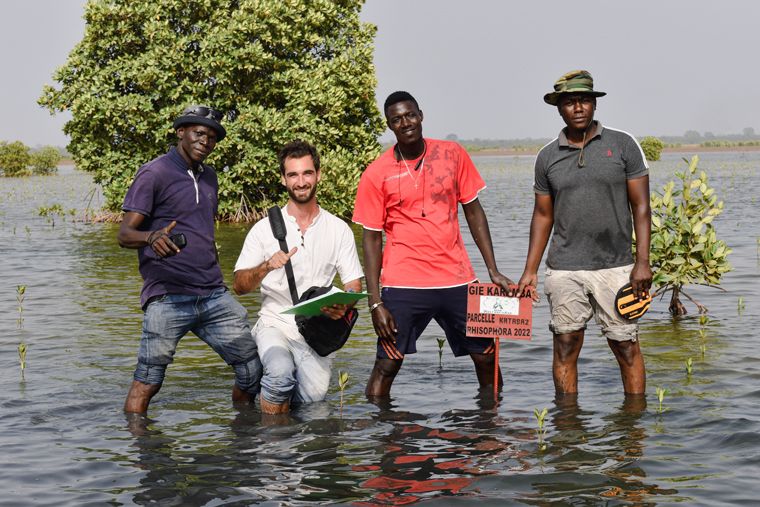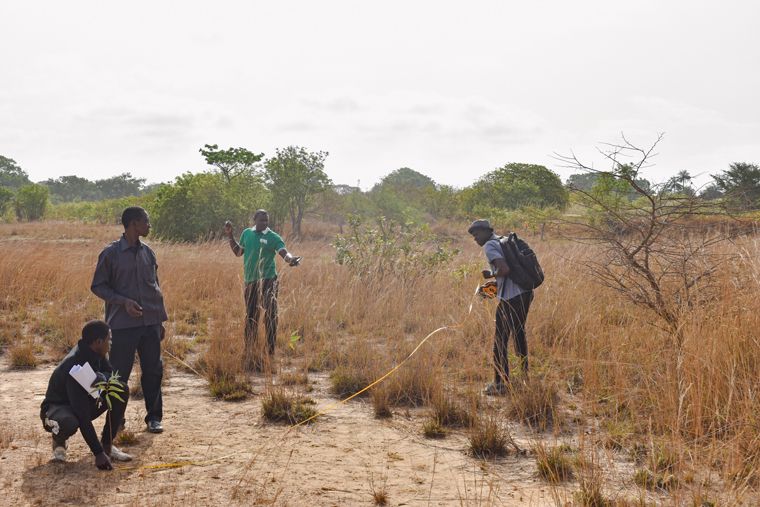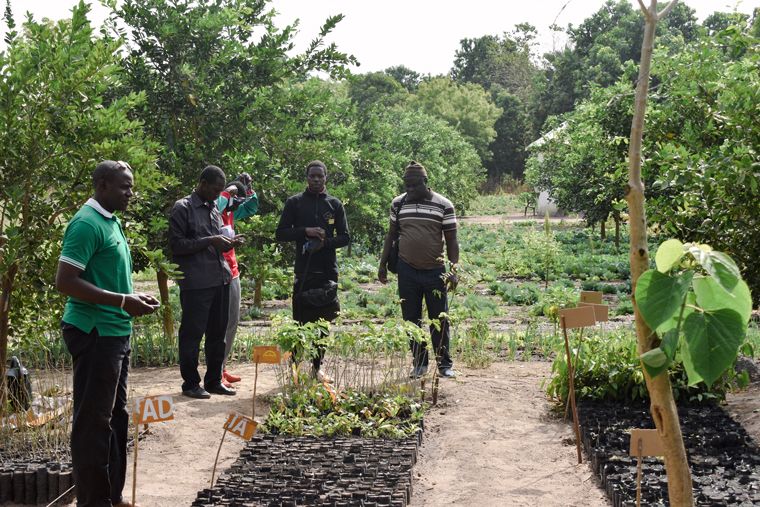In Senegal, Reforest'Action has been financing a regenerative, multidimensional project since February 2022. Led in the field by Karamba, a Franco-Senegalese economic interest group, and Bioeco, a French company providing technical support, the project aims to restore mangrove ecosystems around the village of Kataba, enrich degraded natural forests and develop agroforestry.
A multidimensional and regenerative project
The project is located in the Ziguinchor region of southern Senegal, between Gambia and Guinea-Bissau, where biodiversity has been severely eroded as a result of the armed conflicts of the 1980s and the population explosion. Added to this environmental catastrophe is the salinization of the land, i.e. the accumulation of salts with a high sodium content in the soil to levels that are toxic for fauna, flora and fungi. The result is a massive abandonment of these lands, traditionally used for rice cultivation, which are gradually becoming infertile and evolving into bare, barren spaces, unsuitable for any agricultural activity. This natural phenomenon is exacerbated by climate change and the retreat of the region's forests, including the mangrove ecosystems along the Casamance River. The regenerative project financed by Reforest'Action and led by our partners Karamba and Bioeco, aims to restore natural ecosystems while generating an additional social and economic impact for local communities who live mainly from agriculture, fishing, livestock and forest resources. A total of 100,000 trees are to be planted under the project to achieve a triple objective: regenerating mangroves, restoring degraded forests and swamps, and developing agroforestry. At the end of the project's first year, in March 2023, an audit mission by Yori d'Aquino, Project Officer for Reforest'Action, noted the project's good operational progress, as well as the enthusiasm of local communities for both the regeneration of natural ecosystems of mangroves, forests and swamps, and the development of agroforestry.

Regenerating mangroves: a source of environmental and socio-economic benefits
A veritable amphibious forest, the mangrove is a plant formation that covers 75% of the coasts, deltas and estuaries of intertropical regions. Mangroves are vital for biodiversity and local communities. Multifunctional by nature, it provides numerous ecosystem services, both environmental and socio-economic. The mangrove's root system also plays a vital role in preserving soil and water resources. Thanks to their roots, mangroves fix the unstable soils in which they grow, thereby limiting coastal erosion and sea-level rise. Rich in precious resources such as fish, medicinal plants, forests, fruit and honey, mangroves are also essential to local populations and their economic activities. Mangrove restoration, the main component of the project, aims to reduce the salinization of coastal land, particularly rice paddies, making them unsuitable for cultivation. The planting of mangrove trees (Rhizophora and Avicennia) also helps to increase mangrove-related economic activities such as fishing and the production of wood energy for cooking. Between February 2022 and February 2023, these labor-intensive operations mobilized a large number of local young people.

Restoring soil health and biodiversity in natural forests and swamps
Four species are replanted to enrich degraded natural forests: néré, Senegal mahogany, linké and gmelina. Cashew seedlings are also introduced. These fire-resistant trees, with their high economic added value, will act as firebreaks against potential bush fires. The project also involves reforestation of maritime swamps located between the mangrove and the mainland. The reforestation actions carried out as part of the project concern swamps that were formerly herbaceous and have now been stripped bare by intensive cattle grazing, with the aim of stabilizing these ecosystems and restoring their crucial role in combating land salinization. The three species planted (eucalyptus, filao and niawli) will eventually regenerate the grass cover.

Developing agroforestry to increase the availability of natural resources
Around Kataba, local communities depend on agriculture for their daily livelihoods. They grow rice, millet, maize, cowpeas and sorghum. The agroforestry trees planted as part of the project will enable farmers to protect their crops and generate additional income by selling fruit at local markets. Our partners are training local producers in the need to include trees as integral components of their agriculture through the creation of agroforestry systems. Various tree species are introduced:
- Fruit species, including detarium and néré (Parkia biglobosa), known for the juice extracted from its fruit as well as for its medicinal uses; these species will protect the underlying crops and provide local people with additional income from the sale of their fruit and seeds.
- Wood species such as gmelina, Senegal mahogany (Khaya senegalensis) and linké (Afzelia africana), a local species in danger of extinction. These species will provide communities with timber and firewood resources, thus avoiding the need to cut down existing forests. Linké has numerous applications in traditional pharmacopoeia, and will also provide fodder for livestock.
Local communities are directly involved in preparing the land for reforestation and planting. Each beneficiary is also responsible for the upkeep of the planted trees, which are a source of energy wood and fruit. At the same time, training programs in agroforestry ecosystem preservation techniques are offered to local farmers. In particular, they are trained in Assisted Natural Regeneration (ANR) techniques, such as identifying natural regrowth and protecting it with sheaths against livestock and bush fires.
